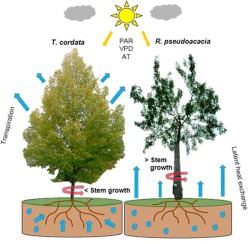What is Importance of Plants and Trees in our Life.
The Importance of tree for Human Life
Introduction
Trees, the towering giants that grace our landscapes, have a remarkable relationship with humans that extends beyond their aesthetic appeal. Their presence is intertwined with our very existence, supporting and enriching our lives in countless ways. From providing oxygen to mitigating climate change, trees play an essential role in maintaining a healthy and sustainable environment. In this article, we delve into the profound relationship between trees and humans, exploring the diverse ways in which they benefit us.
The symbiotic exchange of gases between humans and trees is one of the most important connections between the two species. Trees take carbon dioxide from the atmosphere and release oxygen into it through the process of photosynthesis. In actuality, a single mature tree has the capacity to produce two people's annual needs for oxygen. In addition to giving us the air we breathe, this essential function also aids in the fight against air pollution and the improvement of air quality.
Trees act as natural climate regulators, influencing local and global climates. Their dense foliage provides shade and reduces surface temperatures, thereby mitigating the urban heat island effect. Additionally, trees absorb and store carbon dioxide, a major greenhouse gas, helping to offset the impacts of climate change. By preserving and expanding forested areas, we can harness the power of trees to combat global warming and stabilize weather patterns.
Forests serve as vital habitats for countless species, fostering rich biodiversity. By preserving and restoring these ecosystems, trees provide homes and sustenance for a wide array of flora and fauna. Biodiversity, in turn, enhances ecosystem resilience, ensuring the availability of resources and promoting ecological balance. Humans benefit from this relationship by enjoying the beauty of diverse natural landscapes and by relying on a healthy ecosystem for essential resources such as food, medicine, and raw materials.
The intricate root systems of trees play a crucial role in soil conservation. Tree roots bind soil particles together, preventing erosion and maintaining the integrity of riverbanks and slopes. In addition, fallen leaves and organic matter from trees enrich the soil, enhancing its fertility and promoting agricultural productivity. This natural cycle of nutrient recycling and soil conservation is vital for sustainable agriculture and ensuring long-term food security.
Water Management
Trees act as natural water managers, contributing to the hydro logical cycle. Their roots absorb and retain water, reducing the risk of floods and regulating water flow. By intercepting rainfall, trees also reduce soil erosion and minimize the transport of sediments into water bodies. Moreover, forests help replenish groundwater resources, ensuring a sustainable supply of freshwater for human consumption, irrigation, and industrial use. Beyond their environmental benefits, trees have a profound impact on human health and well-being. Research suggests that exposure to green spaces, such as forests and parks, can reduce stress, enhance mental well-being, and improve cognitive function. The presence of trees in urban areas has also been linked to decreased air pollution and noise levels, creating healthier and more livable cities. In essence, trees contribute to creating harmonious and sustainable environments that support our physical and mental health.Conclusion
The relationship between trees and humans is deep-rooted and symbiotic. Trees provide us with life-sustaining oxygen, regulate climates, support biodiversity, conserve soil and water resources, and promote our overall well-being. Recognizing the value of trees and taking collective action to conserve and expand forests is vital for a sustainable future. By nurturing this invaluable connection, we can ensure a harmonious coexistence with the natural world and secure a healthier and more resilient planet for generations to come.










We offer guest posts. Thank you so much for visiting my blog.